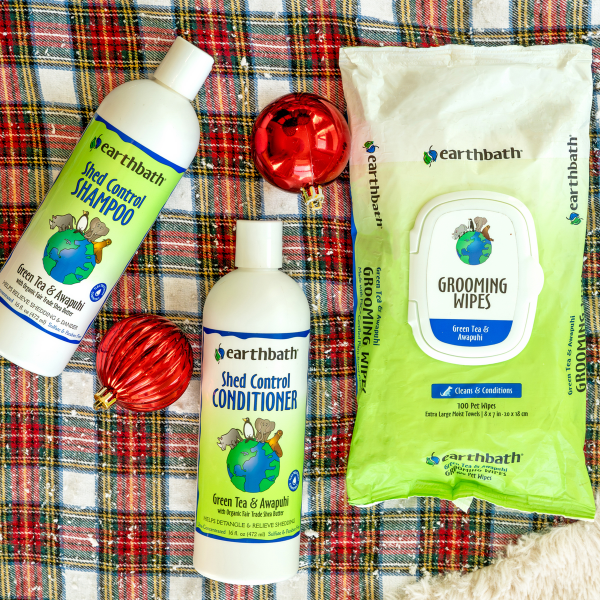In this two-part series over the next two weeks, we describe the seasonal insanity that is “blowing coat” and then, detail the best way to manage this massive shedding!
Some dog owners may never come across this dreaded two-word phrase (Looking at you, you single-coated breed owners, you!), but those of us who have the pleasure of sharing our lives (and homes) with the furrier Arctic breeds, made all the fluffier by a warm, dense undercoat, also have the distinct DISPLEASURE of finding great tumbleweeds of fur blowing through our homes once, twice, or even three times a year, depending on the climate, the type of dog, gender, whether or not the dog is “intact,” and how much time s/he spends outside.
In fact, for all the frustration (and extra vacuuming) it can cause, it is completely natural for dogs to “blow coat” once or twice annually, changing their winter coat to a lighter one for summer, as the seasons change. All dogs shed (we humans “shed” hair too – around 100 per day!). In fact, shedding old, dead hair allows the new coat to grow in. It is actually a bit of a myth that some breeds don’t shed: while all dogs shed, the amount of shedding actually varies greatly from breed to breed. The downside to those breeds that shed little to no hair (for example: terriers, maltese, shih tzus, poodles, bichon frises, and water dogs) is that they usually need to be professionally groomed (or clipped) often, otherwise their fur is highly prone to matting.
The benefit, therefore, of a dog that blows out their coat or sheds consistently year round, is that these breeds typically don’t need much, if any, professional coat-cutting, since nature pretty much takes care of that for you! Even though the term “fur” and “hair” are often used interchangeably to describe a dog’s coat, in general, a double coat (made up of a soft, insulating undercoat underneath a coarser topcoat made up of guard hairs, the longer outer coat hairs), like that of a Siberian Husky, Shiba, Chow Chow, or Samoyed, is correctly referred to as a FUR coat, while a single coat (lacking an undercoat), like that of a shih tzu or a terrier, is actually a HAIR coat.
Evolutionarily, those breeds that originated from the harsh Northern climates needed a dense undercoat to protect and warm them through the frigid winter months, and would shed this undercoat as the need for it waned with the increasing daylight hours of spring and summer months. In today’s world of mostly climate-controlled, pampered and indoor companion animals, the environmental effects of changing seasons and day lengths on fur coats are minimized. Double-coated dogs that enjoy the outdoors, and as a result, spend most of their time outside, will usually have two distinct seasons of shedding that respond to the changing season from winter to spring and fall to winter. Indoor dogs tend to shed at a fairly consistent and continuous rate, unless other factors trigger a more pronounced shed.
Other things that influence hair growth and shedding include genetics, nutrition, age, sex, health status, season, and the normal hormonal fluctuations of an “intact” dog. I was having a conversation with a dog breeder the other day and she mentioned offhandedly, “oh, yes, I can always tell if a dog is spayed or neutered from the coat. You’ll never see a more beautiful coat than on a fixed dog.” I thought that was an interesting comment, which, in part, prompted my research for this article! And in fact, hormonal levels definitely impact the condition and quantity/type of coat. Spayed and castrated dogs usually have denser undercoats, which gives that fluffy, “cottony” appearance. I am still waiting, however, to see whether or not my two chows (one male, one female, both “fixed”) will in fact, “blow coat” as spring progresses, more than the relatively massive amount of hair that comes out in the nightly brushing session. Maybe they’re in the process already; it’s my first “season” with them, so I have no comparison point. That said, my male chow is shedding more voluminously and much more noticeably from his undercoat than his sister; who basically feels like touching the fluffiest cloud of cotton candy you can imagine.
Read on to Part 2, where we cover (in detail) the best way to manage blowing coats.
As a quick preview, we’ll give you a hint:
Brush, Wash, Brush, Repeat.






